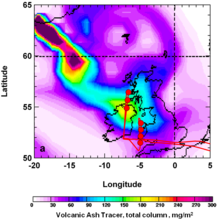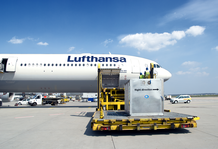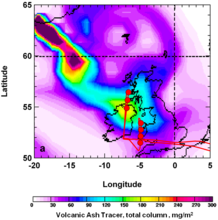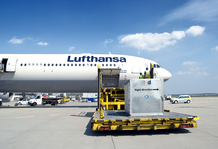Bleach in the Icelandic Volcanic Cloud
Chlorine in the ash plume of the Icelandic volcano Eyjafjallajökull attacked atmospheric trace gases
One year after the Eyjafjallajökull volcano in Iceland brought European air traffic to a standstill its ash plume revealed a surprising scientific finding: Researchers at the Max Planck Institute for Chemistry in Mainz found that the ash plume contained not only the common volcanic gas sulfur dioxide, but also free chlorine radicals. Chlorine radicals are extremely reactive and even small amounts can have a profound impact on local atmospheric chemistry. The findings, which will be published in “Geophysical Research Letters“ give solid evidence of volcanic plume chlorine radical chemistry and allowed calculations of chlorine radical concentrations.

It has been known for some time that volcanic eruptions emit chlorine-containing gases, causing scientists to suspect that highly reactive chlorine radicals could also be present. However, sufficient experimental evidence proved elusive. That changed when researchers analyzed air collected in the ash cloud emitted by the Eyjafjallajökull volcano. During three special flights conducted by Lufthansa in spring 2010 using the CARIBIC atmospheric measurement container, researchers collected air samples which they brought back to their laboratory in Mainz for analysis. Among the compounds they looked for were hydrocarbons.
”Each volcano has its own character”, says Angela Baker, lead author of the paper. “We found that hydrocarbon concentrations were up to 70% lower inside the Eyjafjallajökull ash cloud than outside. Reaction with chlorine radicals was the only realistic explanation for the hydrocarbon losses. And further investigation confirmed that free chlorine radicals were the cause“. The scientists calculated concentrations of up to 66,000 chlorine atoms per cubic centimeter of air. While modest compared to concentrations of other gases, chlorine radicals are normally absent, and it does not take much of these very reactive atoms to have a noticeable impact on atmospheric chemistry.
Hydrocarbons like propane and butane can be found even in the cleanest and most remote parts of the lower atmosphere. Normally they are removed when they react with hydroxyl radicals, but they react many times faster with chlorine radicals. In doing so the chlorine reactions leave their specific ”signature“ on the mixture of hydrocarbons in the air. This signature can, in turn, be used to calculate how many chlorine radicals were present. The Max Planck scientists who calculated volcanic ash cloud chlorine radical concentrations for the first time anticipate that similar results will be found in plumes from other volcanoes, such as the currently erupting Grimsvötn. They also hope that their method will be used during future studies to identify and understand volcanic chlorine radical chemistry.

About the CARIBIC measurement container
CARIBIC is a unique project based on an airfreight container equipped for extensive global scale atmospheric measurement. The CARIBIC system was developed in Germany in cooperation with ten institutes from six European countries. CARIBIC is being coordinated by the Max Planck Institute for Chemistry in Mainz. The flying laboratory travels each month for four long distance flights aboard the Lufthansa Airbus A340-600 “Leverkusen“.
Outside air containing trace gases and aerosol particles is collected during the entire flight by a dedicated inlet probe underneath the aircraft’s hull and fed into the measurement equipment inside the container. The container was deployed during three special flights to probe parts of the volcanic plume of the Eyjafjallyjökull on Iceland that erupted in April and May 2010.
The equipment in the container detects over 50 different atmospheric species, including greenhouse gases, ozone, CFCs, water vapor and aerosols. The detailed dataset helps to locate sources of air pollution, to find out how air pollution is transported and how the atmosphere cleans itself. In this way, by using in-service passenger aircraft one can obtain a precise picture of the atmosphere’s composition and processes at reasonable cost. CARIBIC is enabled by Lufthansa and sponsored by Frankfurt Airport since 2009.
For further information about the measurement container and the project, please visit www.caribic-atmospheric.com

